ZTherapy 240Z SU Carburetor Spotter’s Guide
This is not a carb-It is a boat anchor!
June1972 240Z to all 260Z’s (US) Flattop “Hitachi”
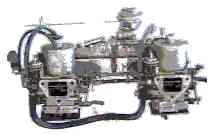
Evil things, these square mouthed carbs.
If you have these carbs on your 240Z-trash them and get ZTherapy SU’s. You will experience a huge increase of power, mileage, and less breakdowns!
These are commonly referred to as “Hitachi’s” or “Flattops”. The dome shoulder is square, and the float bowl is on the bottom.
These carbs are not acceptable as cores. Please pay the core charge instead of sending these in.
Differences
Many parts will interchange. Only one of them was used on your car. Let’s get your car back to original!
The 1969-June 1972 Datsun 240Z has three different carb styles. Factor in the fact that the front and rear bodies are not interchangeable and we have six different bodies!
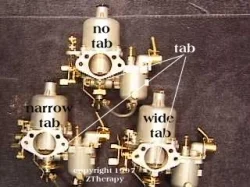
The carbs are commonly referred to as “3 screw” or “4 screw”. This is counting the dashpot hold down screws. The “dashpot” is the dome lid.4 screw only came with narrow tabs, but the 3 screw could have any of the three.The wide tab carbs used a spring steel L shaped tab to push against the mixture nut.This metal tab screwed into the wide tab-that’s why it is there.
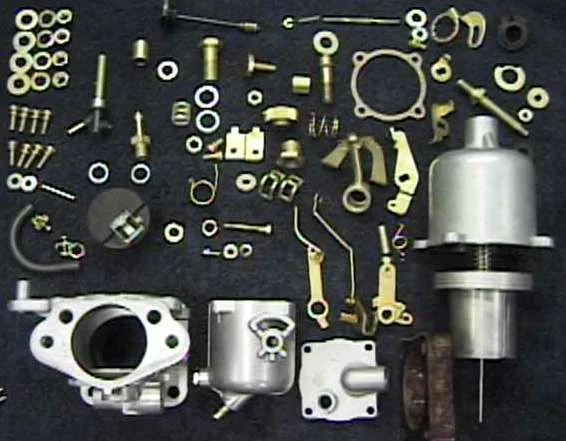
These are all the same mouth size. My graphics skill needs some help!
The intakes for all 70-71 carbs are the same, but the balance tube was assembled with different fittings.The 72 intake was water warmed to help atomize the fuel faster when the engine was cold.
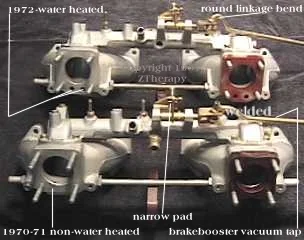
The heat shields were different, too
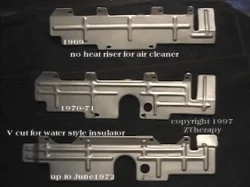
The Float Chamber Lids came in three styles. The float pivot points are called ears. They came long or short. All 70 carbs had two long lids. 71-72 had one long, one short (the short one goes on the rear carb). 1969-Jan 1970 float chamber lids were round with 4 tabs for the hold down screws. This is a result of Datsun raiding the parts bin and using leftover 2 litre Roadster parts. The Z 4 screw body IS the 2L roadster body with the vacuum tap moved.
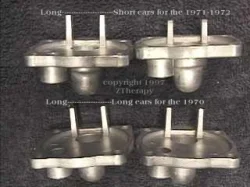
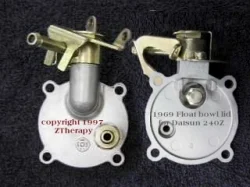
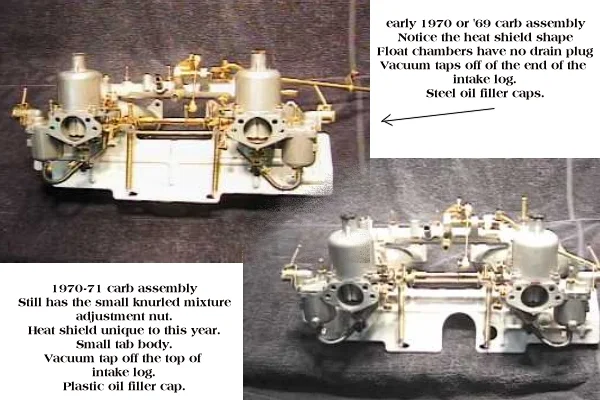
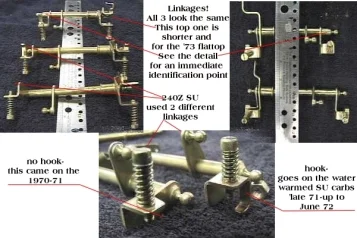
Although not Carb related, while we are comparing different years, here are the two different valve covers:
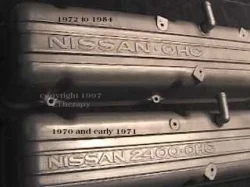
Air Cleaners:Nissan came out with the original “non-flapper” in 1969. Late
1970, smog laws dictated a heat riser be added to preheat the incoming air for the winter. This is called the “Flapper” style air cleaner. There were also two different backing plates, but there is no readily available info on when the hanger bracket was deleted.

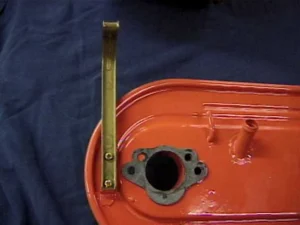
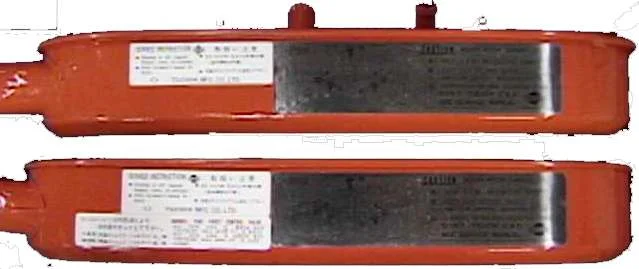
Decal differences: nonflapper on top, flapper on the bottom of this pix
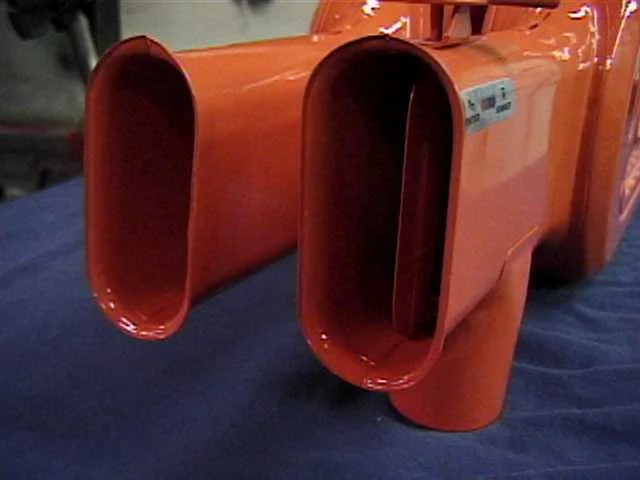
The British and Nissan used cast brass shafts. The Japanese chrome plated them, which helped them last 30 years or so.
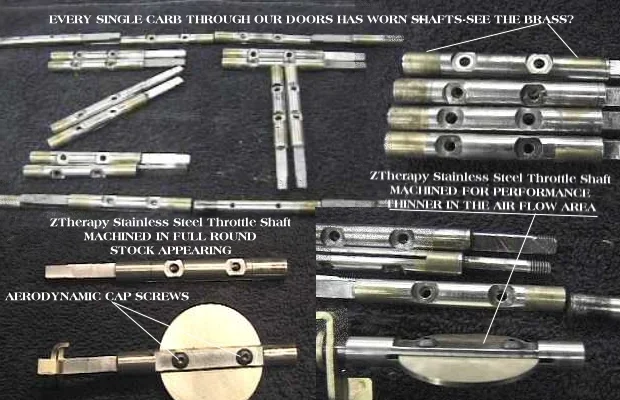
The picture tells it all. After 25 years, the brass is showing. Seems like every single carb arriving at ZTherapy looks like this.Our rebushing service is actually ball bearings fitted where the bushing used to be.
240Z Carb Blowups—3 Screw and 4 screw
SU Carb Parts Breakdown
This is one carb taken apart. What a mess! Hopefully you know where all these bits go. The 3 and 4 screw bodies are so much alike, it is not worth writing up separate pages on both.
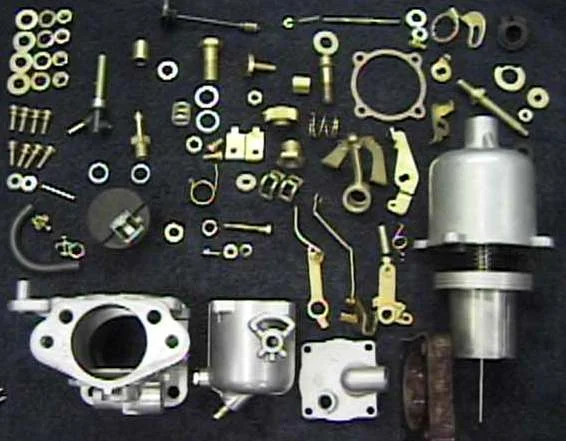
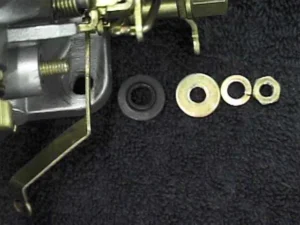
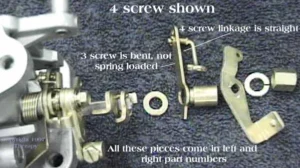
Lower left image-Float bowl mounting hardware-see the nut? It looks like it will fit the 4 screw body guard/mixture adjustment stopper, but the threads are different. Warning!

FOUR SCREW SU GAS NOZZLE TUBE ALIGNMENT PROCEDURE
Theory of operation:
1. The piston is attached to the needle.
2. The needle rests inside the gas nozzle when the throttle is closed
3. The gas nozzle sits inside a brass nozzle tube. This brass tube is a sloppy fit
inside the carb body. The brass tube is held down by a jambnut. All of this
stuff is on the bottom of the carb.
Symptoms:
4. Piston will not fall all the way to the floor of the throttle body.
Operating the choke will let it fall.
5. Carbs will not balance out at idle (because the piston is up on one of
the carbs).
Problem:
4. Sloppy fit of tube to body means the nozzle can be misaligned to the gas
needle.
5. The alignment of the piston and needle can’t be adjusted, so we must move
the nozzle and it’s tube around to get the alignment
Fix Action:
6. Do the drop test as above, then mount the needle to the piston. Needle
shoulder goes flush with the bottom of the piston, not inside the groove. 4
screw pistons have a very small hole for the needle. Use a drill bit and
finger spin it to clean out the hole for the needle. A better way is to loosen the needle
a bit, pull it out a bit, and jamb the piston back in against the fully closed nozzle.
This positively indexes and recesses the needle to where it will shut off all fuel flow
when the piston is down and nozzle fully screwed up. Lower mix nut by 2.5 turns as
normal. Do this step with step #9.
7. Insert the pipe and finger tighten the jamb nut, but don’t wrench on it.
Don’t install the spring or mushroom lookin’ choke stopper/guard
8. Mount the piston and dashpot to the body.
9. Slide in a new nozzle, hold it w/finger, and operate the piston w/other
finger while everything is vertical. Does the piston go all the way down?
If so, wrench tighten the jambnut. If not, spin the pipe w/fingers and try
the piston fall test again. Repeat this until there is no binding.
NOTE: I’ve noticed on a lot of carbs that the needle is too far down, after
being set with a straightedge to the bottom of the piston. How did I
notice? With the nozzle installed, I could push up the nozzle and it would
move the piston. Unscrewing the nozzle adjusting nut 2 1/2 turns will
compensate for this. On the other hand, the gas ratio is based on the fit
between the nozzle and the needle. If you feel so inclined, move the needle
up until both carbs are the same.
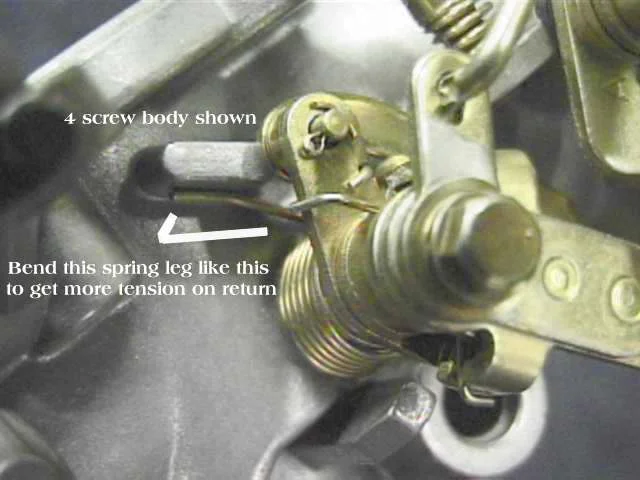
IF there is something wrong with your carbs and you cannot get the nozzle alignment correct, you may increase the tension on the return spring by bending a leg into it as shown above. This should not be necessary! Also, in areas with oxygenated fuels, it is reported that the green coating that Nissan puts on the nozzle brass can get gummy. If your nozzles stick, pull them out (one screw separates them from the linkage) and clean off the green coating with very fine sandpaper. Better yet, buy ZTherapy Nozzles. They are a tiny bit smaller in diameter for less sticking problems. Avail in any metering hole size you desire.
The newer 3 screw carbs are much more prone to sticky nozzles, as the alignment cannot be adjusted. Possible fixes: Remove the green coating, move the spring leg back to the other tab on the body, or add a tiny tubular carb spring to the nozzle linkage, pulling it up. We make offset metering hole nozzles, to match the offset machining by Datsun. Guaranteed fix for the 3 screw sticky piston problem.
Another problem area for the SU carbs is the choke cables. Only use solid steel inner cable. If Nissan’s price is too high, go to a lawnmower store and buy spring steel solid cable there (or a throttle cable kit). Replace your old housings with bicycle cable housing. Motorcycle shops sell cable lube and a pressurized applicator tool. ZTherapy shows how to make a choke lever reinforcing plate in our “Datsun 240Z-280ZX TuneUp Video”
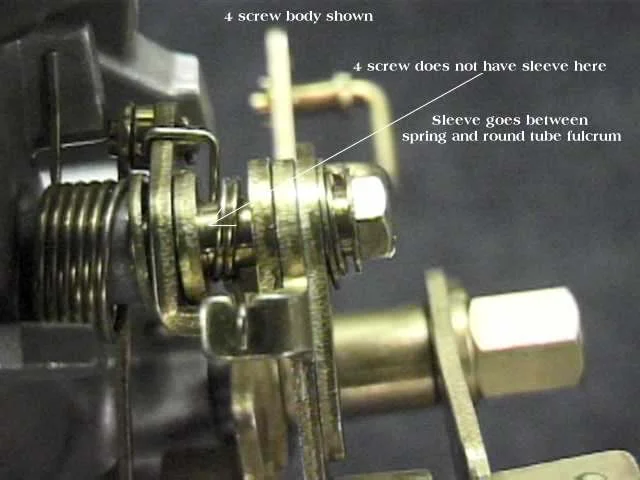
Linkage assembly is the most difficult, brain numbing procedure of the SU reassembly. Left and right are mirror images of each other.
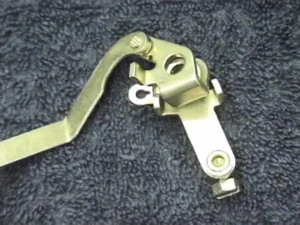

4 Screw only-See the keyhole in the linkage? Most jammed linkages are caused because the rod gets caught in this. Engineering-wise, it’s impossible if everything is assembled correctly. But, if we humans can screw it up, we will!
The newer 3 screw linkage uses a spring loaded cotter pin assembly, preventing this jamming.
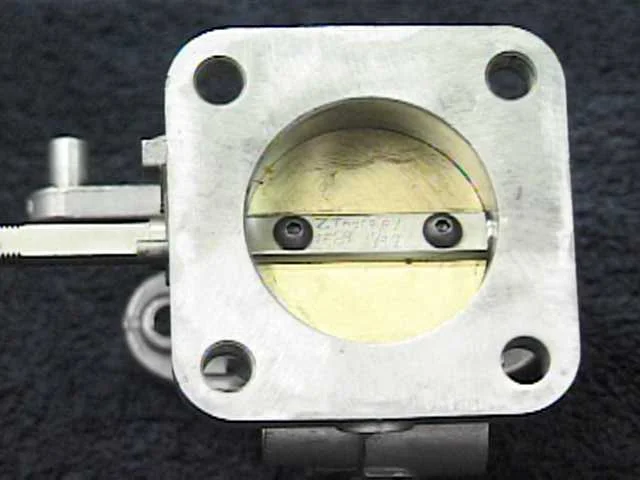
This is the brass (yellow) butterfly, a 1998 ZTherapy Stainless Steel throttle shaft, and new machine cap screws.
We now use ball bearings to prevent sticky throttle shafts.
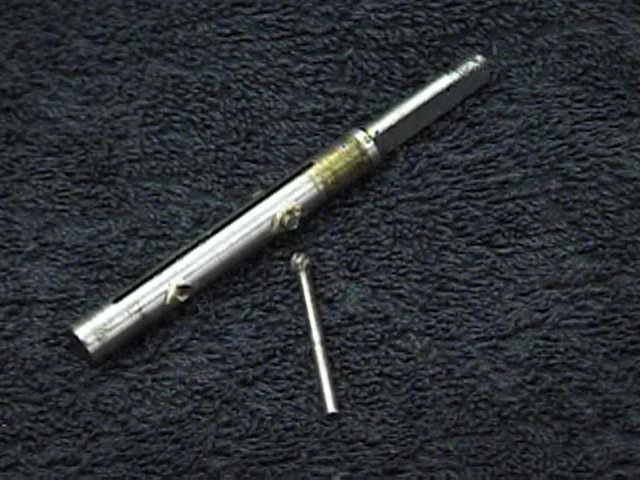
The 4 screw carbs are more difficult to get the throttle shaft out. The ends of the brass screws are “staked” in place with a waffle punch. In other words, the end of the screw is deformed so it will not fall out or loosen up. Removing these screws is virtually impossible with only a screwdriver. The end of the screw must be filed/ground down to get past the deformed area. I use a tiny Dremel tool grinding bit mounted in a 1/4 inch 28,000 rpm Die Grinder. If the screw is not ground down, it will twist apart, necessitating drilling out the screw. Drilling may damage the butterfly, if not done carefully!
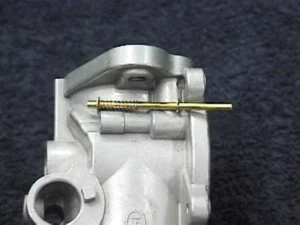
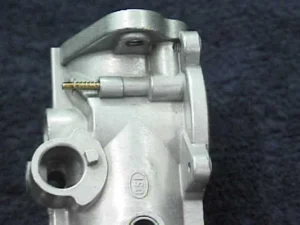
The yellow pin is the piston push pin. It is spring loaded. All it does is allows the mechanic to push open the piston. Releasing it allows the piston to drop with a thunk, verifying proper alignment of the nozzle and operation of the piston.
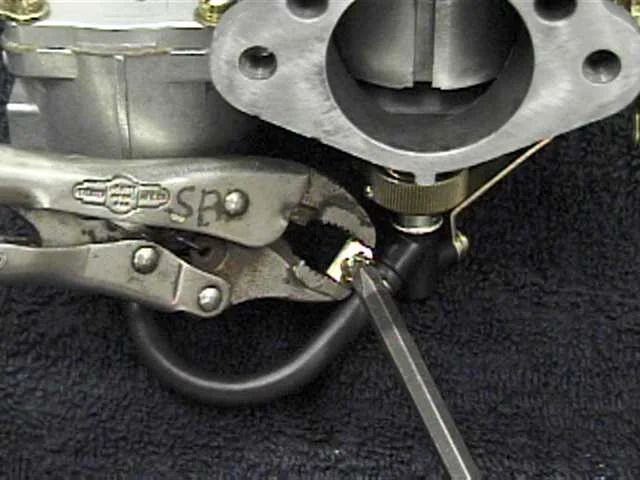
Removing the gas tube clamp can be impossible unless you hold onto the clamp “nut” with some Vice Grips. The alternative is twisting the clamp apart. Big note here: Use only genuine Nissan gas hoses or ZTherapy supplied hose. These are high silicone, and should last 20 or so years without cracking. Other suppliers’ products are reputed to crack after a year. NEVER use straight gas line from the parts store or vacuum tubing. The soft walls and high silicone content of the OEM/ZTherapy hose is critical to proper nozzle operation. ZTherapy sells the correct gas tube and new or replated clamps.
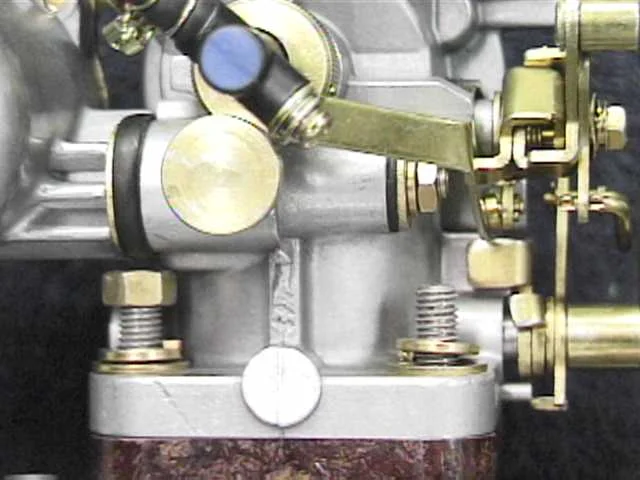
When installing or removing the carbs from your manifold, all the nuts need to be loosened up before trying to remove them. There is no clearance on the bottom of the carb to remove one of the nuts. Sliding the body out a bit will allow the nuts to be removed. Quiz time: Is this a 3 or 4 screw body? It’s a 4 screw or a 3 screw “no tab” or “narrow tab” . See the flat round disc next to the blue nozzle? That only goes on the tabless carbs. This pix also shows the round disc under the blue nozzle. Screwing this disc up or down changes the fuel ratio across the board-at idle and under throttle. The 3 wide screw carb also uses a disc, but is is flat stamped steel with half moon cutouts around it. Don’t get bent out of shape as to which 3 screw you have. It really does not matter, and we can sell you whichever you like.

These are all the bits for a single float chamber.







